The Alliance A-1 Argo was an American-built two-seat biplane of the late 1920s.
The Alliance A-1 Argo was an American-built two-seat biplane of the late 1920s.
The Alliance Aircraft Corporation of Alliance, Ohio, was formed in 1928 by a reorganisation of the Hess Aircraft Co. The firm designed the A-1 Argo as a sturdy two-seat open-cockpit biplane for operation by private pilot owners. The 'Warrior seven-cylinder engine was designed and produced in the same factory at Alliance. [1]
Because of the difficult economic climate then existing, only 20 A-1 Argos were completed. Alliance Aircraft then went into bankruptcy in 1930, being reformed briefly as the Warrior Aeronautical Corporation before that organization also foundered later the same year. [1]
Several Argo biplanes continued in operation by private owners until curtailment of civil flying in the USA in 1941. Two aircraft survived in mid-2009 of which, NC2M (N2M) was rebuilt to airworthy condition by Greg Herrick's Golden Wings Air Museum.
The Ohio History Connection displays a static A-1 Argo on the plaza level of the Ohio History Center. This particular aircraft was constructed in August 1929. [2]
The Alliance Argo, N2M is the same plane as NC2M just the "C" was removed from the aircraft registration by the FAA for all aircraft after 1944. It is listed on the FAA Registry as serial number 108 built in 1929. This aircraft is now owned by Gregory Sean Messner in 100 Mile House, British Columbia, with the registration C-GSMA.[ citation needed ]
Data from Manufacturer's Specifications on American Commercial Airplanes as compiled by Aviation [3]
General characteristics
Performance
The Alexander Eaglerock was a biplane produced in the United States in the 1920s by Alexander Aircraft Company of Colorado Springs, Colorado.

The Pitcairn Mailwing family was a series of American mail carrier and three-seat sport utility biplane aircraft produced from 1927 to 1931.

The Arrow Model F or the Arrow Sport V-8 was a two-seat low-wing braced monoplane aircraft built in the United States between 1934 and 1938. It was built originally to a request by the US Bureau of Air Commerce to investigate the feasibility of using automobile engines to power aircraft. Accordingly, the Model F was fitted with a modified Ford V8 engine. Like the Arrow Sport before it, the Model F seated its pilot and passenger side-by-side in an open cockpit and was marketed for $1500.

The Bellanca CH-400 Skyrocket is a six-seat utility aircraft built in the United States in the 1930s, a continuation of the design lineage that had started with the Bellanca WB-2. Retaining the same basic airframe of the preceding CH-200 and CH-300, the CH-400 was fitted with a more powerful Pratt & Whitney Wasp radial engine.

The Cunningham-Hall Model PT-6 was an American six-seat cabin biplane aircraft of the late 1920s and was the first design of the Cunningham-Hall Aircraft Corporation of Rochester, New York.

The Buhl LA-1 Bull Pup was a light sports airplane developed in the United States in 1930. It was a mid-wing wire-braced monoplane with fixed tailskid undercarriage and an open cockpit for the pilot. Buhl developed the Bull Pup as a cheap aircraft through which the company hoped to remain in business as the onset of the Great Depression was felt. However, as the economic situation worsened, it became evident that there was no demand for even such a basic aircraft; when production ceased in 1932, all aircraft still in stock were sold off at half price as the company folded.
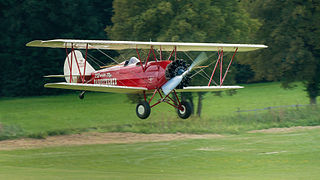
The Travel Air 2000/3000/4000 (originally, the Model A, Model B and Model BH were open-cockpit biplane aircraft produced in the United States in the late 1920s by the Travel Air Manufacturing Company. During the period from 1924–1929, Travel Air produced more aircraft than any other American manufacturer, including over 1,000 biplanes. While an exact number is almost impossible to ascertain due to the number of conversions and rebuilds, some estimates for Travel Air as a whole range from 1,200 to nearly 2,000 aircraft.

The Meyers OTW was a 1930s United States training biplane designed by Allen Meyers and built by his Meyers Aircraft Company from 1936 to 1944.
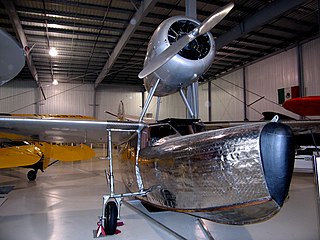
The Fleetwings Sea Bird was an American-built amphibious aircraft of the 1930s.
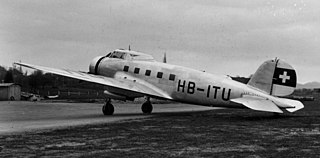
The General Aviation GA-43 was a single engine low-wing monoplane airliner produced in small numbers in the United States in the mid-1930s, also known as the Pilgrim 150, Fairchild 150, and sometimes but erroneously as the Clark GA-43 for the designer, Virginius E. Clark who was also responsible for the Clark Y airfoil section used.

The Bullet Monoplane or Alexander Eaglerock Bullet was a low wing cabin monoplane that was a departure from traditional biplane aircraft of the era.

The Stearman M-2 Speedmail was a mail-carrier aircraft produced by the Stearman Aircraft Company of Wichita, Kansas. It first flew in January 1929. The Speedmail was a single-seat biplane, with two large cargo compartments in place of a front cockpit. The fuselage and tail unit were constructed from welded chrome-moly steel tube faired with wooden formers and fabric covered aft of the pilot's cockpit, and detachable aluminium alloy panels covered the fuselage forward of the cockpit. The wings were constructed from spruce spars and plywood built-up ribs, all fabric covered. It differed from previous Stearman aircraft by having a tailwheel instead of a tailskid due to its size and weight.

The Mutual Blackbird was a late 1920s two-seat open cockpit sporting biplane.

The Waco 9 is an American-built three-seat biplane design that first flew in 1925.

The Swallow Airplane Swallow is an American-built general purpose biplane of the mid- to late 1920s.
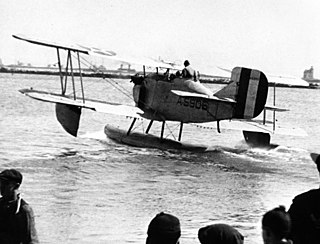
G Elias & Brother was and American manufacturer of cabinets and aircraft based in Buffalo, New York in the 1920s. A.G. Elias sat on the Manufacturers Aircraft Association's board of directors along with President Frank H. Russell, VP Glenn L. Martin, Charles L. Laurence, Chance M. Vought, S.S. Bradley, George P. Tidmarsh, and Donald Douglas. E.J Elias promoted the construction of a Buffalo municipal airport to aid the local fledgling airplane industry of five aviation companies constructing airplanes and airplane parts. From 1920 to 1925, Elias company's chief engineer, David Earle Dunlap (1896-1957), designed the Elias EM-2 Expeditionary planes. He designed the NBS-3 bomber fuselage and the Elias M-1 Mail plane. Dunlap's Elias TA-1 design was the first United States Army Air Corps Trainer to have a radial engine. After tests a McCook Field, the Army Air Corps selected other manufacturers over the Elias bomber and trainer. The company designed the Elias EM-1 to meet requirements for a multirole amphibian marine expeditionary aircraft. Elias delivered six production Elias EM-2 aircraft with Liberty engines to the United States Navy in 1922.

The Gee Bee Model A was an American two-seat open cockpit single-bay biplane developed by the Granville Brothers that first flew in 1929.
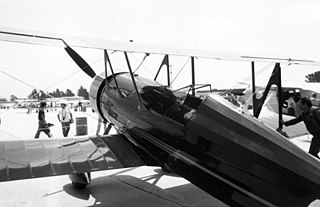
The Curtiss-Wright CW-14, named variously Travel Air, Sportsman, Speedwing and Osprey is an American 3-seat open cockpit single-bay biplane from the 1930s that was developed by Travel Air as a replacement for the highly successful Travel Air 4000. As a result of the Great Depression, which also limited sales, Travel Air merged into the Curtiss-Wright group of companies before production could start, so all examples were built by Curtiss-Wright. Its main claim to fame would be as the most numerous aircraft used in the Chaco war, where it formed the backbone of the Bolivian Air Force.

The Butler Blackhawk and the Skyway from which it was developed were American three-seat open-cockpit single engine biplanes of the late 1920s that were built in small numbers immediately prior to having their intended production run interrupted by the onset of the Great Depression.

The Wiley Post Model A is a U.S. two seat sports biplane, built in small numbers in the 1930s.